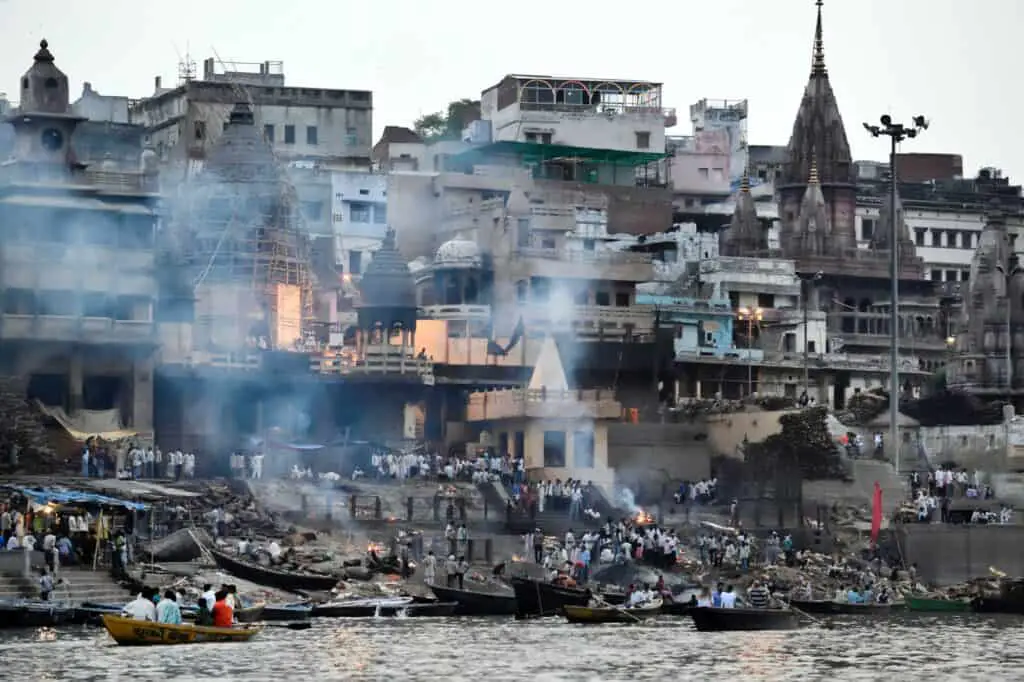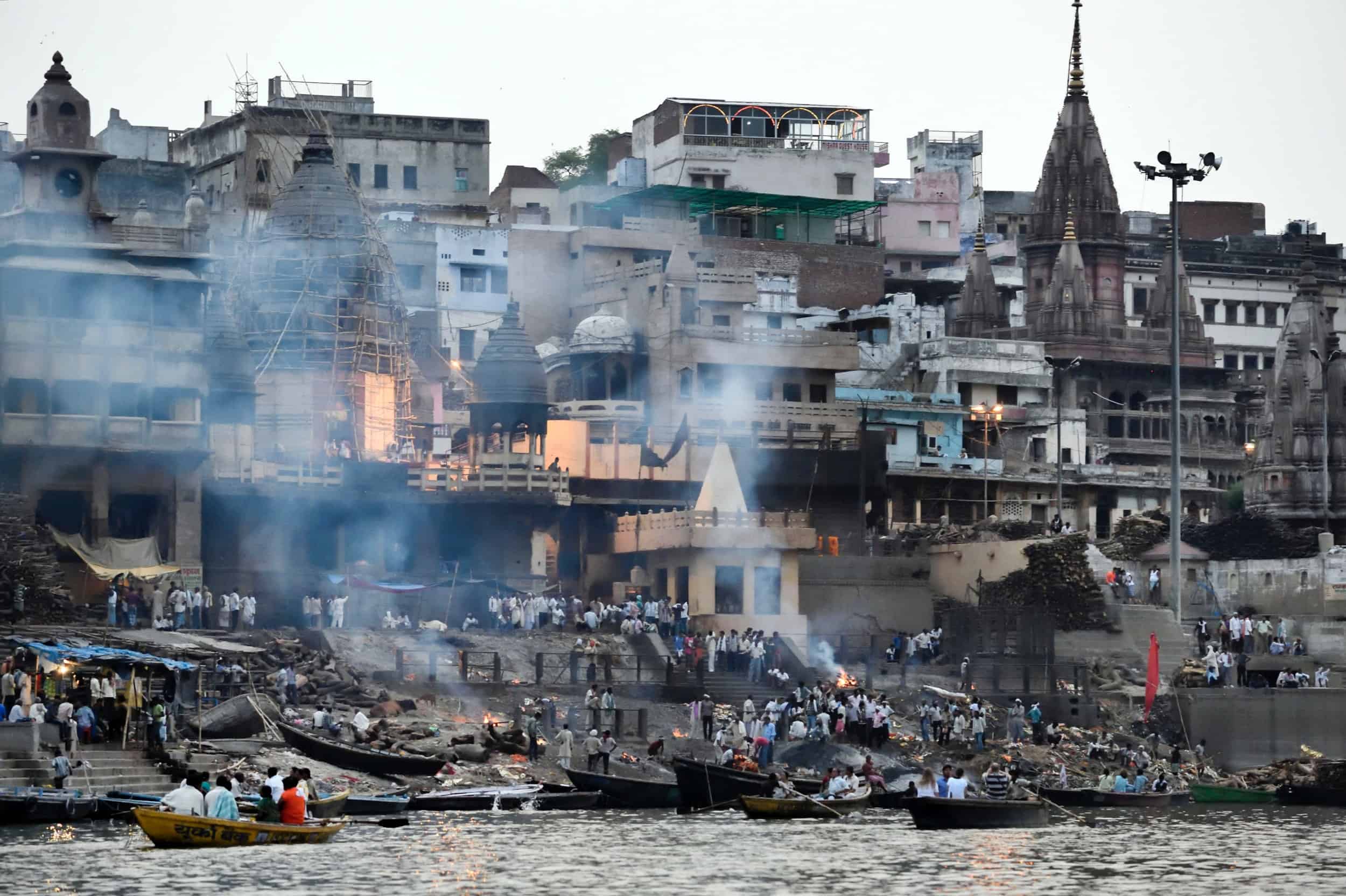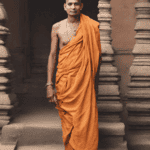What are the Hindu funeral rituals?
Traditionally, Hindu funeral rituals consist of chants or mantras, which are led by an officiant, who is usually a Hindu priest or the bereaved eldest son. They’ll collect the relatives and friends and conduct them through the different Hindu funeral ceremonies. These are some of them:
- Ghee, honey, milk, and yogurt are used to wash the body.
- Putting essential oils on the deceased’s head (turmeric for females, sandalwood for males)
- Putting the hands together in a prayer stance and binding the big toes together
- Wrapping the deceased’s body in a white sheet or dressing it in nice clothing (modern) (traditional)
- They surround their loved ones with a garland of flowers and ‘pinda’ (rice balls).
- Placing a lamp close to the head or sprinkling water on the dead body.

Hindus’ Beliefs about Deaths
The Hindu faith is based on the concept of reincarnation, which holds that when a person dies, their soul is reborn in a new form. They believe that even when their physical bodies die, their souls live on and recycle until they find their real nature.
This can take several lifetimes, and they endeavor to get closer to Brahma, the Hindu God, with each death. Furthermore, they believe that their soul’s next incarnation will be determined by their previous life’s conduct, a concept known as Karma.
Why do Hindus Cremate?
Hindus believe that the physical body has no purpose after death and hence does not need to be kept. They think that burying their loved ones is the quickest way to liberate the soul and aid in reincarnation.
Hindu cremations used to be held on the Ganges River in India, with the family carrying the casket to the crematorium. Hindus are now cremated locally, and most funeral directors can meet Hindu cremation traditions and rites.
When do Hindus Cremate and Bury the dead body?
Hindus cremate the body by default. But, they bury the dead body when someone is not married.

What Happens at a Hindu Funeral?
While mourners recite prayers, the casket is taken into the Crematory feet first.
The corpse is displayed in an open coffin, and attendees are expected to see the body. This should be done about and without touching the dead body.
The cremation ritual (‘makhani) is conducted by a Hindu priest and senior family members. Traditionally, only men were allowed to attend the makhani; however, modern Hindu funerals now allow women to attend.
The ashes of a Hindu funeral are dispersed over a sacred body of water or a site of significance to the departed the next day.
Some Do’s and Don’t after Death In The Family
The do’s and don’ts in the family may defer in some communities but we will highlight some of the commonly observed ones in this article. Some of them are:
- After death, the kitchen fire (hearth) is not started right away. For a particular period, the family does not cook food in the house; this varies by location. Friends, neighbors, and relatives who are unaffected by the ritual pollution of death provide food to the family during this period.
- Members of the household do not wear new clothes or engage in any form of bodily adornments, such as hair oiling or cosmetics application.
- For a set amount of days, men do not shave. The men of the house shave their heads in mourning when the period of mourning is through.
- The immediate family is ritually impure and unable to offer worship to the Gods during the season of grief, which usually lasts 11 to 13 days.
- Notify the cremation ground officials and obtain approval as well as a timeline. Notify all of your loved ones, relatives, or members of the community.
- Cleaning/dressing the body by the regulations, transporting the body to the cremation place and performing all kriyas as required.
- Sanchayan is required after the third day.
- With reverence and purity, bones will be immersed in holy water.
- In most cases, the mourning phase lasts 10 to 16 days and varies by location and community. It can be cut down to 5 to 10 days in urban regions where people are busy and time is valuable.
- Kriyas should be performed after consulting astrologers at this time, and at the end of the grieving period, everyone involved should be invited to a static vegetarian feast.
Conclusion
Hindu burial procedures and traditions, like those of other religions, differ according to the needs and preferences of each religious sect and family. From this article, we have been able to expound on some of the funeral rituals observed and performed by the Hindus. It is also pertinent to note that funeral rites in Hinduism consist of Chants or mantras which are usually led by a Hindu priest as outlined in this article.


